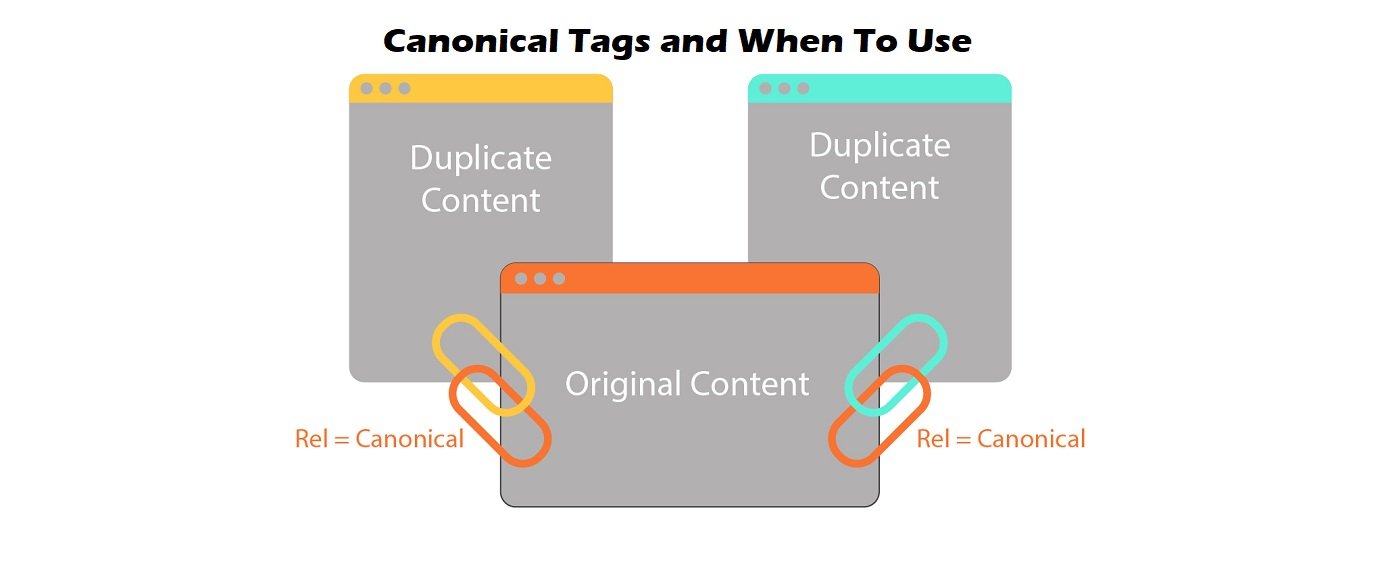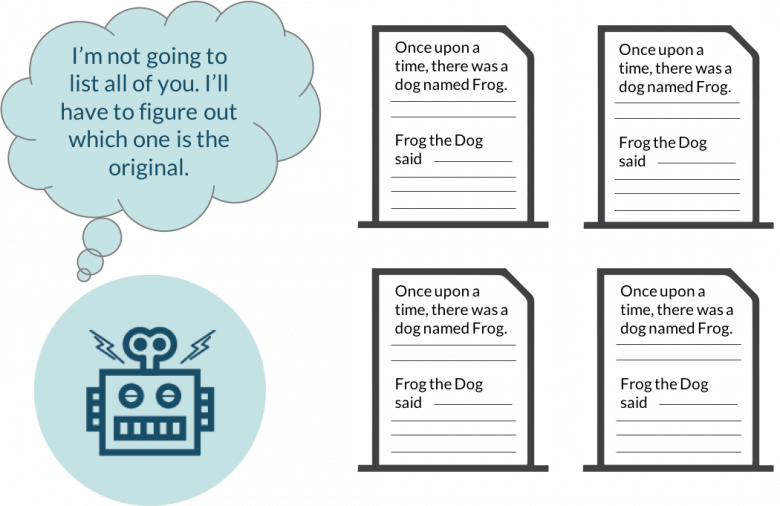
What Are Canonical Tags and When Should You Use Them?
6 minutes | Word Count: 1138SEO is a whole different language and the people who speak it are often hard to understand. There’s so much jargon to get to grips with and so little time to do it in – especially when you’re busy running a business and writing content to get it noticed online.
But your content efforts are the whole reason canonical tags exist. This handy bit of code tackles one of the biggest problems in SEO – duplicate content.
Canonical tags have been around since 2009 and were introduced by a coalition of internet giants including Google, Microsoft and Yahoo!.
But what are they and when should you be using them? In this post, we’re going to find out.
What is a canonical tag?
A canonical tag is a snippet of HTML code that identifies the main version of a piece of content. It tells search engine crawlers which version of duplicate content is the master copy… the source of the others.
So, you’ll need to use canonical tags if your web content is accessible via more than one URL. Contrary to popular belief, duplicate content is not always intentional, like when businesses publish the same product pages under multiple currencies or locations.
Almost all websites host duplicate content and that’s all down to how search engine crawlers ‘see’ individual web pages.
Let me explain…
What is ‘duplicate content’ for the purpose of canonical tags?
Search engine crawlers don’t ‘see’ web pages the same way we do. To you and me, the Home page of your website is a single page of content. Small changes in the URL you use to get to your home page are irrelevant. But they’re not irrelevant to search engine crawlers.

To a crawler, every version of the URL that points to that Home page is a separate page. These different versions look something like this:
- http://www.homepage.com
- https://www.homepage.com
- http://homepage.com
- http://homepage.com/index.php
- http://homepage.com/index.php?r…
Although all of these URLs point to the same page of content, a crawler will see and catalogue them as separate pages of duplicate content… unless you tell them which one is the master copy. And that’s what a canonical tag is for.
In reality, the above examples represent a small fraction of the duplicates most websites store. And websites run on dynamic content can have thousands as these are automatically generated as part of the function of a dynamic CMS.
But why does this matter?
Why are canonical tags important for SEO?
If a search engine crawls your site and all of the above URLs point to your Home page and you haven’t added a canonical tag to the master copy, the crawler will see five separate pages of duplicate content.
If you don’t use canonical tags, search engines might:
- Waste your crawl budget looking at different versions of the same content and have less time to look at the rest of your site
- Index the wrong version of your page and direct your traffic there, which means it will…
- Split your link equity between multiple versions of the same page
By adding a canonical tag to the master copy of your content, you’re telling search engines:
- Which version you want to index
- Which version you want to be crawled
- Which version you want to direct link equity to
Ultimately, adding a canonical tag helps your page to rank.
What does a canonical tag look like?
Now we know what canonical tags are for and why you should be using them, let’s talk about how and when you should do it.
Thankfully, canonical tags are super easy to understand because they use simple and consistent syntax. You’ve probably seen canonical tags referred to as ‘rel=”canonical”’ and that’s a reference to the single line of code you use to implement the tag.
You can add a canonical tag within the <head> section of a web page, like so…
<link rel=“canonical” href=“https://homepage.com/example/” />
Here’s what that looks like in action…

When should you use a canonical tag?
Here are some examples of common times you’ll need to use canonical tags:
- On your Home page: almost all Home pages have duplicates so all Home pages should be canonicalised
- For all pages on dynamic websites: code-driven websites create duplicates as standard so it’s always worth regularly checking your pages for duplicates if your website uses dynamic content
- For cross-domain duplicates: if you run several websites and often syndicate contend across them (e.g. you’re a publisher) you can canonicalise the site you want to focus your ranking power to
If you’re still in the process of setting up your website, add canonical tags to your pages at the start. That way, you’ll save time going back to identify duplicates and canonicalise them later. And, let’s face it, between renewing your web hosting plan, domain registration and everything else that goes along with running a website, you’ll thank yourself for eliminating one more.
How to add canonical tags?
There are many cases where you should use a canonical tag. But first you need to find your duplicate content.
Use a tool like Screaming Frog to search your website for URLs that point to duplicate content. Then review them to decide which version you want to identify as the master copy.
Once you’ve decided which version is the master, you need to add the code to each of the non-master pages. The code will reference the master page, thereby telling search engines non to index the non-master copy and instead crawl and index your chosen master.
For example, let’s say you run an eCommerce store. You sell ceramic mugs and you want this URL to be the master…
https://examplestore.com/ceramics/ceramic-mugs/
But the same content is available from other URLs, e.g.
- https://examplestore.com/offers/ceramic-mugs/
- https://examplestore.com/ceramics/ceramic-mugs/index.php
- http://examplestore.com/offers/ceramic-mugs/
And so on.
To tell search engines that you want https://examplestore.com/ceramics/ceramic-mugs/ to be the master copy, you’ll need to add the code…
<link rel=”canonical” href=”https://examplestore.com/ceramics/ceramic-mugs/” />
… to each of the duplicate pages.
That’s a wrap
Canonical tags are often misused. But if you get to grips with them and use them sparingly and well, you can concentrate search engine crawler’s attention where it’s needed most and give your web pages a boost in the SERPs. Let us know how you get on with canonical tags in the comments below.
3 thoughts on “What Are Canonical Tags and When Should You Use Them?”
Comments are closed.





















I don’t think canonicalizing to the first page is good in pagination.
This was extremely helpful. I’m new to SEO and I’m absorbing as much information as I can. Some of it is hard to grasp. But this was very detailed and walked you through the steps.
This is a great guide. I’ve seen this word thrown around a lot lately with no real understanding of what it actually meant so I’m glad to see that someone took the time to do this. Thanks!